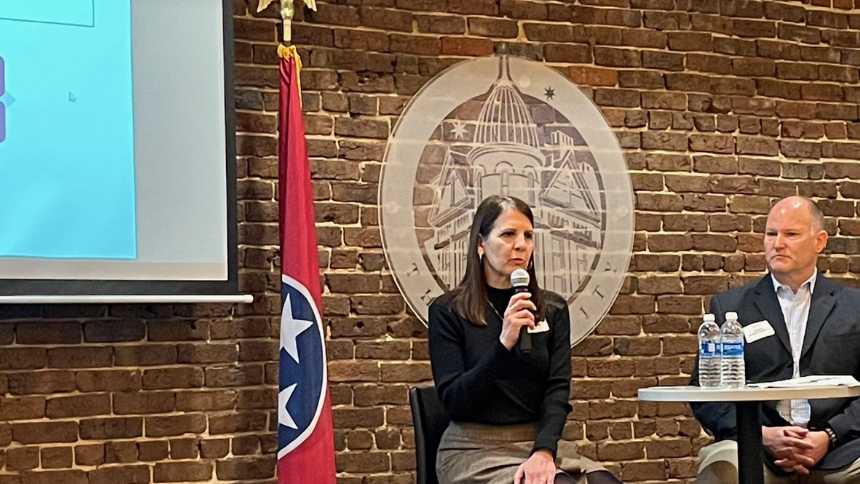
New Markets Tax Credits offer great benefits for economically distressed communities
The program allows investors to earn a tax credit against their federal income tax in exchange for making equity investments in prjects.
Starting with its name – New Markets Tax Credit (NMTC) – that does not roll off one’s tongue easily, attendees at Tuesday morning’s Knoxville Chamber workshop learned just how complicated the program that helps economically distressed communities attract private capital by providing investors with a federal tax credit is.
Yet, as was demonstrated by examples cited by the three panelists during their presentations, the federal initiative established in 2000 breathes new life into neglected and underserved low-income census tracts. Notable examples range from the University Commons project that turned a blighted and abandoned industrial brownfield site into a productive retail center near the University of Tennessee’s (UT) Knoxville campus to the Model Mill project in Johnson City that turned an abandoned 110-year old flour mill into an office complex just down the street from East Tennessee State University.
How does it work?
The NMTC program attracts private capital into low-income communities by permitting individual and corporate investors to receive a tax credit against their federal income tax in exchange for making equity investments in specialized financial intermediaries called Community Development Entities (CDEs). The credit totals 39 percent of the original investment amount and is claimed over a period of seven years – five percent each year for the first three years, then six percent annually for the next four years.
During the workshop, three individuals who spend part or all of their days focused on the NMTC program spoke. They were: (1) Chris Leutzinger, Senior Vice President and New Markets Tax Credit Relationship Manager with Truist Community Capital; (2) Monica Blanton, Director of New Market Tax Credit Operations for BrightBridge Capital and River Gorge Capital, its subsidiary; and (3) Grady Vanderhoofven, President and Chief Executive Officer at Three Roots Capital.
“You need to find a CDE who likes your project,” Vanderhoofven advised as a good first step for those seeking funding through the NMTC program. Why is that important? Unlike many federal programs where the applicant directly applies to the federal agency, the NMTC award is to a CDE that is evaluating the best place to make investments in a very competitive environment for the limited federal tax credits that it has been allocated.
CDEs, which compete annually for an allocation, will seek third-party investors and lenders to provide capital to the qualifying project in exchange for the federal tax credits. The proceeds are used to fund investments in qualifying businesses or commercial real estate developments. Typically, the proceeds are structured as low interest rate, convertible loans.
Much of the overview was provided by Leutzinger with the other two panelists offering additional context or citing specific projects such as the investments in the former Brushy Mountain State Prison that included distillery, restaurant, gift shop, and concert venue; UT Research Park; Southern Champion Tray in Chattanooga; and Interfaith Dental in Nashville.
“Every project has to have a minimum amount of commercial space to be eligible,” Leutzinger said, explaining that they also need to check one of three boxes. They must:
- Create quality jobs in areas like manufacturing, renewable energy, and food processing which he defined as providing a living wage and not requiring a four-year degree;
- Provide community facilities that are not otherwise available such as charter schools, hospitals, and food banks; or
- Provide real estate for projects like grocery stores and offices.
What makes a good project? Leutzinger said it involves a number of factors including: (1) the geographic location; (2) a demonstrated significant impact on the community such as new jobs, increased wages, or additional community services); and (3) the documented need that the project would not likely occur without the subsidized funds.
Both Blanton and Vanderhoofven stressed the importance of having capable, knowledgeable and experienced attorneys and accountants. Leutzinger added that those seeking NMTCs should be patient as the process can take 12 to 24 months.
Like what you've read?
Forward to a friend!

